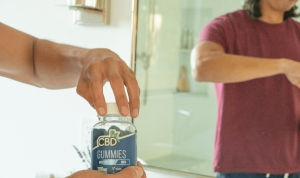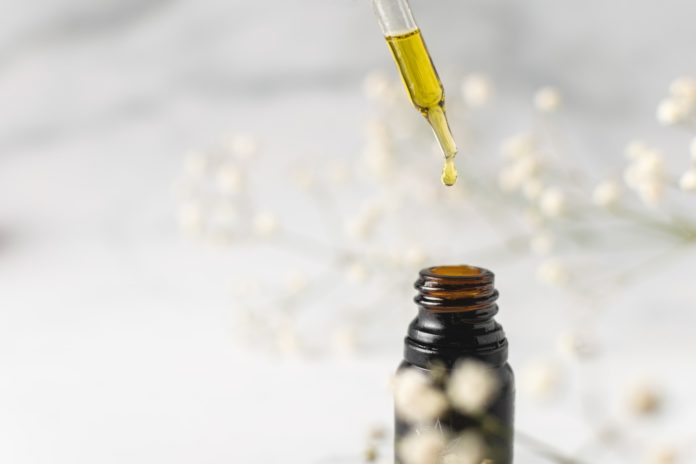When it comes to CBD consumption methods, many still wonder how to take CBD oil?
Sure, you know that you consume it, but other questions pop up in your mind.
How much should you take?
What time of day is the best time to take it?
How often should you take it?
These are all valid questions, especially if it’s your first go-round with CBD. It may seem like a lot to digest at first, but don’t stress, if you follow these tips, you’ll be on the most beneficial path to CBD wellness.
First, it’s helpful to understand the different types of CBD oils on the market.
Broad Spectrum, Full Spectrum, and CBD Isolate
When you’re shopping for CBD oil, you’ll run across these three—broad spectrum, full spectrum, and CBD isolate.
We’ll start with the full spectrum option since it functions somewhat as a starting point of this oil selection. Hemp plants contain a variety of cannabinoids, terpenes, and essential oils—offering whole-plant benefits.
Trace amounts of THC are still present in full spectrum oil since it contains whole-plant benefits and cannabinoids. With trace amounts present in the oil, you can experience intensified effects since all of the cannabinoids work synergistically.
This process is called the entourage effect, and often the main reason some people opt for full spectrum. Sure, the trace amounts of THC are less than 0.3%, but some people prefer it not to be present in their oil since it can cause a false positive on a drug screening.
When full spectrum oil undergoes an additional extraction process to remove all THC trace amounts, you end up with broad spectrum oil. Since there is zero THC, you have peace of mind that comes in handy if you have to take any type of routine drug screenings.
However, you will lose some of the entourage effect’s intensity since you now lack one cannabinoid.
Lastly, there’s CBD isolate, which contains 99% pure CBD. There is no entourage effect with this option, but some say this is precisely what they need.
This leads us to our next point.
Understanding Your Own Needs
CBD is a personalized experience based on the fact that our genetic compositions vary. Let’s say your friend tells you about our CBD oil, tells you how they take it, and how much they take.
It seems like an excellent place to start, but it’s not because what works for your friend may not work for you since you both have different weights, metabolisms, biochemistries, and genetics.
You’ll need to access your own needs by asking yourself a few questions.
What are you trying to accomplish with CBD?
The first question revolves around the idea of wellness goals and intentions. Are you taking CBD to create calming vibes? Do you seek relief from something? If so, how intense is the discomfort?
How are you most comfortable taking CBD oil?
When you ask yourself these questions, you can figure out the concentration and frequency of your servings.
Generally, most people are best suited with a lower concentration to start. It’s also best to start with small amounts and work your way up until you reach the desired effect.
How are you most comfortable taking CBD oil?
You’ll need to think about how you’re most comfortable taking your CBD oil. Some people prefer not to take it out of the vial and blend it in with a morning smoothie.
Just try to keep your lifestyle in mind and think of the best way to integrate CBD oil into your life.
Now, let’s move on to how often you should take your CBD oil.
Consistency Matters
 Interestingly, we all create cannabinoids or endocannabinoids, and our naturally-occurring level of cannabinoids affects our product’s effectiveness.
Interestingly, we all create cannabinoids or endocannabinoids, and our naturally-occurring level of cannabinoids affects our product’s effectiveness.
People with lower levels of naturally-occurring cannabinoids may not feel the same effect as someone with higher levels. However, this is fixable by taking your CBD every day, letting cannabinoids build up in the system.
When this build-up happens properly (when needed), you’ll see those therapeutic effects you signed up for in the first place.
Fats are Your Friend
If you want to enhance your CBD’s effectiveness, try combining your serving with a fatty meal. CBD is fat-soluble, and your body is 60% oil.
You know what this means—oil and water don’t mix.
The CBD from your product needs to be able to fully absorb into your system. Fatty fishes like salmon and tuna are excellent examples of this.
If you suspect you have low levels of cannabinoids (not feeling the effects you hoped for), adding this step to your routine can help tremendously since CBD is fat-soluble. The addition of fats gives CBD absorption a boost.
Most CBD oils already contain some type of fatty oil base like MCT oil. Still, the more you have, the faster your absorption rate.
AM Servings vs. PM Servings
 Deciding what time of day to take your CBD is essential.
Deciding what time of day to take your CBD is essential.
Think about what you want to achieve (yes, again). Do you want relaxing effects before bedtime, or do you want to mellow out and enhance focus and concentration?
If you’re using CBD to enhance your bedtime routine, you’ll want to take it about 30 minutes before bed. The calming vibes of CBD create a relaxing wind-down effect for the mind and body, allowing you to fall asleep fast and sleep through the night.
Of course, daytime use is best if you want to increase your focus while you move along with your daily routine. Many find great success with this approach by sticking with a lower concentration.
Thoughts for the Road
There’s no set way to take CBD oil. When you ponder on the questions presented, you’ll come across an outline of what your personal process looks like.
Once you put it all into action, adjusting here and there as needed, you’ll have it down—your personalized approach to CBD wellness.
Ready to find your personalized approach to CBD wellness?
Check out our collection of CBD Tincture Oils!

